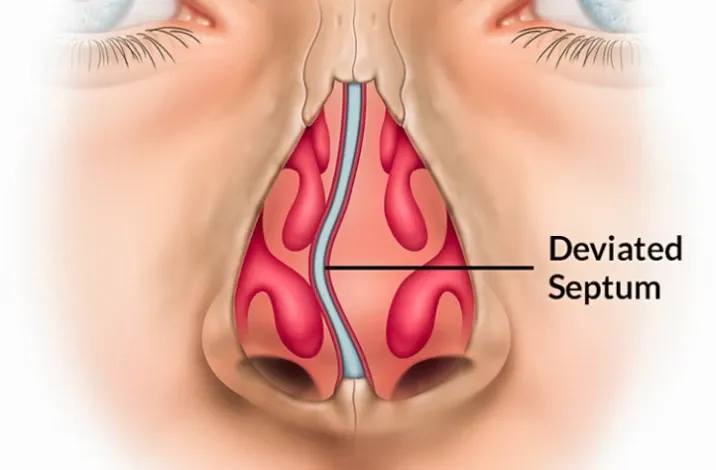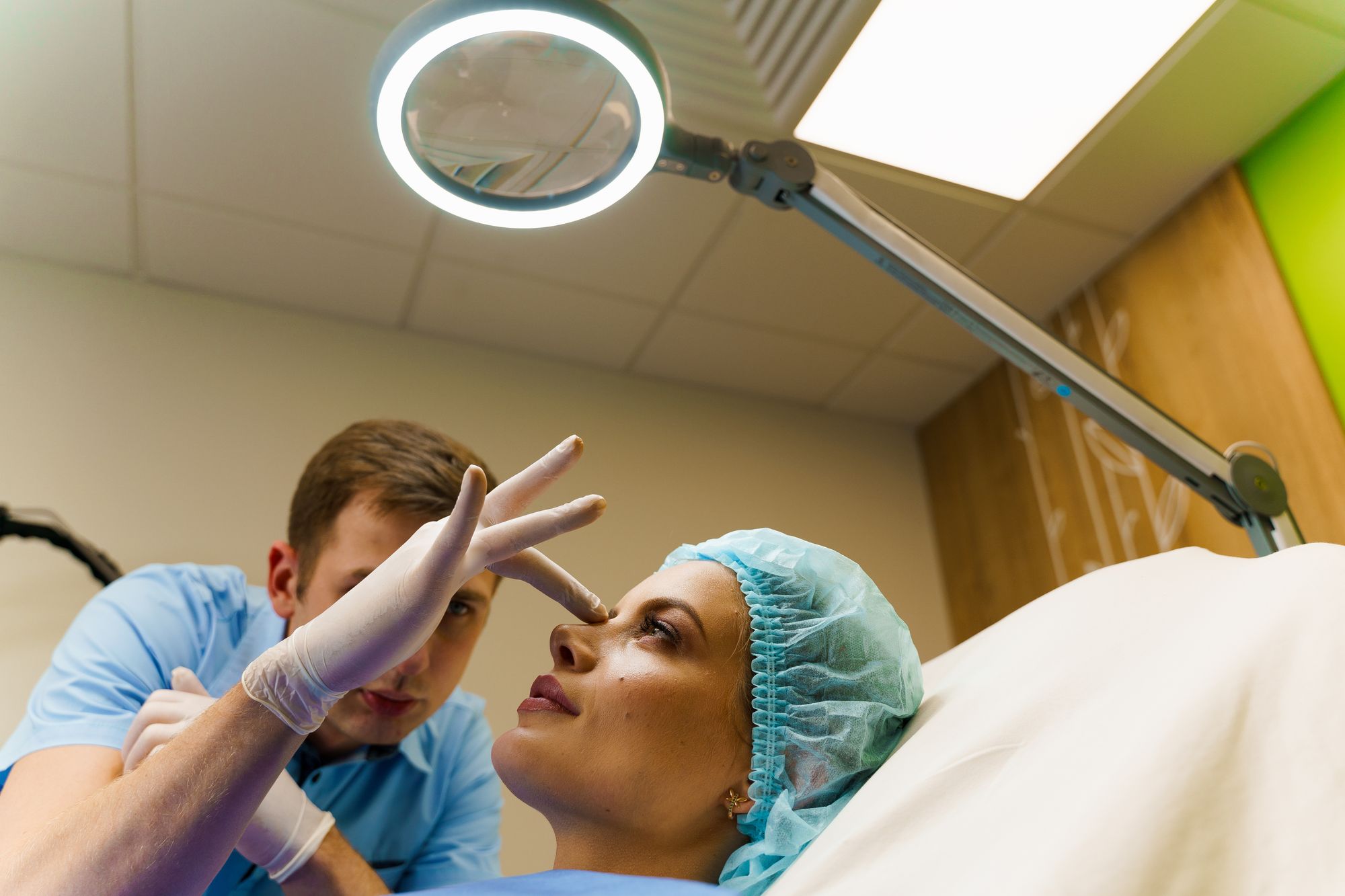Septoplasty: A Comprehensive Guide to Understanding the Procedure, Benefits, and Risks
Breath Better, Live Better: All About Septoplasty. Learn what to expect, recovery tips, and the key to a smoother nasal passage. Your guide to a hassle-free septoplasty journey. 🌬️👃

Septoplasty is a surgical procedure performed to correct a deviated septum. This condition occurs when the thin wall (nasal septum) separating the nostrils is displaced to one side, causing breathing difficulties. Septoplasty aims to straighten the septum, enabling better airflow through the nose. In this article, we will delve deeper into the procedure, its benefits, risks, recovery, and more.
1. What is a deviated septum?
A deviated septum is a condition where the nasal septum, the thin wall that divides the nasal cavity into two, is displaced to one side. This condition can be congenital or occur as a result of trauma. In some cases, a deviated septum may cause no symptoms. However, in others, it can cause nasal congestion, difficulty breathing, snoring, and even sleep apnea.
2. When is Septoplasty Necessary?
Septoplasty is usually recommended if the deviated septum is causing significant symptoms that are impacting the patient’s quality of life. These symptoms may include:
- Nasal congestion
- Difficulty breathing through the nose
- Frequent nosebleeds
- Recurring sinus infections
- Sleep apnea
- Headaches
- Snoring
3. Preparing for Septoplasty

Before undergoing septoplasty, there are a few steps patients should take to prepare themselves for the procedure.
3.1 Consultation with an ENT Specialist
The first step is to schedule a consultation with an ENT (ear, nose, and throat) specialist. During this consultation, the specialist will evaluate the patient’s medical history, perform a physical examination, and determine whether septoplasty is necessary.
3.2 Physical Examination and Medical History
During the physical examination, the specialist will examine the inside of the patient’s nose to determine the degree of deviation. They may also perform imaging tests such as CT scans or X-rays.
The specialist will also ask about the patient’s medical history, including any medications they are currently taking, allergies, and previous surgeries.
3.3 Medications to Avoid Before Surgery
Patients may be asked to stop taking certain medications that can increase the risk of bleeding during surgery, such as aspirin, ibuprofen, and blood thinners. It is essential to inform the specialist of any medications or supplements the patient is currently taking to avoid any complications during or after the procedure.
4. Septoplasty Procedure
Septoplasty is usually performed under general anesthesia, which means the patient is asleep during the procedure. The surgeon will make an incision inside the nose and lift the mucous membrane to access the septum. The surgeon will then straighten the septum by removing or reshaping the cartilage and bone. In some cases, additional tissue may be added to the septum to reinforce it and prevent future deviations.
4.1 Anesthesia
Before the procedure, the anesthesiologist will administer general anesthesia to the patient, putting them to sleep for the duration of the surgery. This ensures the patient feels no pain or discomfort during the procedure.
4.2 Incision
The surgeon will make an incision inside the nostril to access the septum. The mucous membrane will then be lifted to reveal the septum.
4.3 Repositioning the Septum
The surgeon will reposition the septum by removing or reshaping the cartilage and bone. They may also use additional tissue to reinforce the septum and prevent future deviations.
4.4 Closing the Incision
Once the septum has been straightened, the surgeon will close the incision using absorbable stitches. The stitches will dissolve on their own and do not need to be removed.
5. Recovery after Septoplasty
After the surgery, patients can expect some discomfort and swelling in the nose and face. The following section outlines what patients can expect during the recovery process.
5.1 Postoperative Care
The surgeon will provide specific instructions on how to care for the nose and incision after surgery. Patients will need to avoid blowing their nose and sneezing for a few days after the procedure, as this can cause bleeding and disrupt the healing process.
5.2 Pain Management
Patients may experience some pain and discomfort after surgery. The surgeon will prescribe pain medication to help manage the pain during the recovery period.
5.3 Healing Time
Most patients can return to work and normal activities within a week after the surgery. However, it can take several weeks or even months for the full healing process to occur.
5.4 Returning to Work and Activities
Patients should avoid strenuous activities, such as heavy lifting or exercise, for at least two weeks after the surgery. They should also avoid activities that increase the risk of injury to the nose, such as contact sports or rough play.
- Risks and Complications of Septoplasty
Like any surgical procedure, septoplasty carries some risks and potential complications. Some of the most common risks and complications include bleeding, infection, breathing difficulties, and adverse reactions to anesthesia. However, these risks are rare and can usually be managed with proper care and attention.
- Alternative Treatments for Deviated Septum
Septoplasty is not the only treatment available for a deviated septum. Other options include medications, such as decongestants and antihistamines, and non-surgical procedures, such as balloon sinuplasty.
- Frequently Asked Questions
Here are some commonly asked questions about septoplasty:
8.1 How long does it take to recover from septoplasty?
Most patients can return to work and normal activities within a week after the surgery. However, it can take several weeks or even months for the full healing process to occur.
8.2 Is septoplasty a painful procedure?
Patients may experience some pain and discomfort after surgery. The surgeon will prescribe pain medication to help manage the pain during the recovery period.
8.3 How long does the surgery take?
Septoplasty typically takes between 30 minutes to an hour to complete.
8.4 Will septoplasty improve my breathing?
Yes, septoplasty is designed to improve breathing by straightening the septum and allowing for better airflow through the nasal passages.
8.5 Can septoplasty be performed with other procedures?
Yes, septoplasty can be performed with other procedures, such as rhinoplasty (nose job) or sinus surgery. However, this will depend on the individual patient’s needs and the recommendation of the surgeon.



